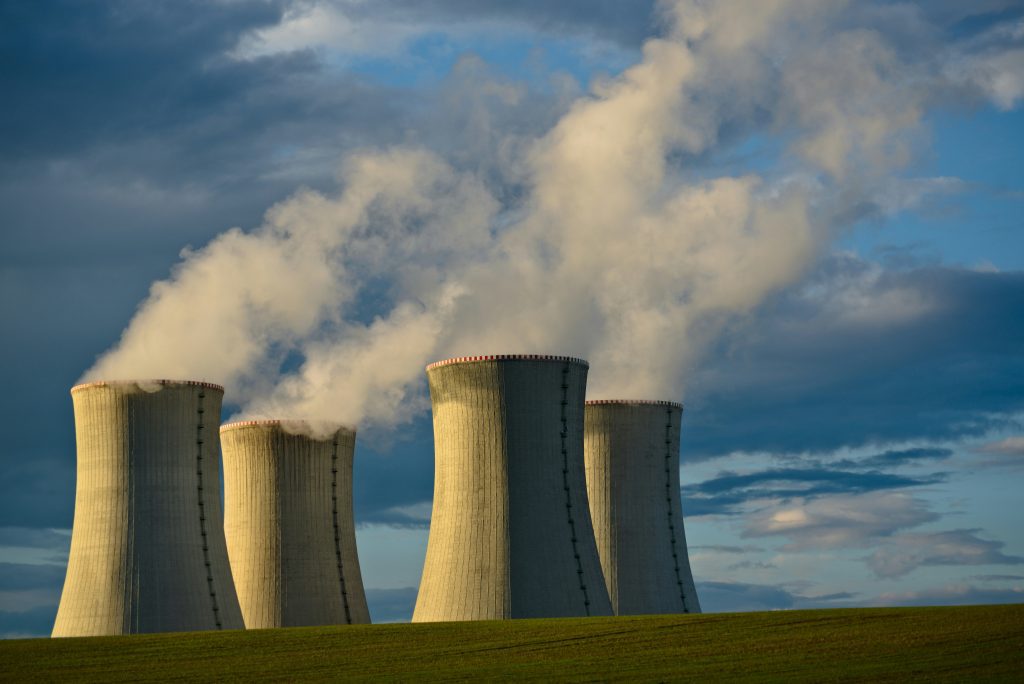
(Photo by Jas Min on Unsplash) With the global community grappling with the escalating climate crisis, understanding the status of CO2 emissions from major economies becomes crucial. China, the USA, and Europe collectively account for a large portion of global carbon emissions, each adopting unique strategies to combat this environmental challenge.
China’s emissions, after a large rebound post-COVID, are set to decline from 2024 due to substantial investments in renewable energy.
Europe is witnessing a notable reduction in emissions driven by aggressive renewable energy targets and stringent climate policies.
Meanwhile, the USA is making steady progress through legislative measures, infrastructural investments, and advancements in carbon capture technologies.
This overview delves into the current emissions trends and the impactful initiatives undertaken by these key players, providing a comprehensive understanding of their roles in the global effort to reduce CO2 emissions.
Carbon Emissions in China, the USA, and Europe
CO2 Emissions in China
China’s carbon emissions have been on an upward trend, rebounding significantly after the zero-Covid policies. In the third quarter of 2023, emissions increased by 4.7% year-on-year due to the resumption of economic activities and increased demand for oil and manufacturing.
However, China is expected to see a decline in emissions starting in 2024, driven by record growth in renewable energy installations, particularly wind and solar power. This structural shift towards low-carbon energy sources is anticipated to offset the rise in electricity demand and push fossil fuel use into decline.
La Chine émet un tiers des émissions de CO₂ liées à la production d’énergie.
— Cobra effect (@Cobra_FX_) July 23, 2024
3,3 fois plus que l’Europe, 2,4 fois plus que les USA. pic.twitter.com/LntER2rOL5
CO2 Emissions in Europe
Europe has been making substantial progress in reducing its carbon emissions. In recent months, the EU’s CO2 emissions fell by 5%, with a further acceleration to an 8% decline in October 2023. This decrease is attributed to high fossil fuel prices, increased renewable energy generation, and the adoption of heat pumps and electric vehicles.
The share of fossil fuels in the EU’s electricity generation fell to 33% in 2023, with important contributions from wind and solar power. The EU’s response to the energy crisis, including a surge in renewables, suggests a continued trend of declining emissions (Carbon Brief).
CO2 Emissions in USA
The United States has seen a steady decline in carbon emissions, with a 17% reduction since 2005. This decrease is mainly due to a shift from coal to natural gas and renewable energy sources for electricity generation. The growth of wind and solar power, along with supportive state and federal policies, has largely reduced the country’s carbon footprint. The US energy sector’s transition towards cleaner energy sources continues to drive emissions reductions.
Combined Global Impact Shows Potential for CO2 Emissions Reductions
The combined trends in China, Europe, and the USA provide a mixed but cautiously optimistic picture of global CO2 emissions:
- Current Situation: While China’s emissions have recently rebounded, they are expected to decline starting in 2024 due to large-scale investments in renewable energy. Europe is already experiencing large emissions reductions, driven by a strong shift towards renewables and high fossil fuel prices. The USA continues to see a steady decline in emissions, supported by a transition to natural gas and renewable energy sources.
- Future Outlook: If China’s anticipated decline in emissions materializes and Europe and the USA continue their current trajectories, global CO2 emissions could see a substantial reduction. The rapid adoption of renewable energy technologies and supportive policies in these major regions are crucial for achieving this outcome.
Overall, the combined efforts and trends in China, Europe, and the USA indicate a potential for large global CO2 emissions reductions in the near future, provided that the momentum towards renewable energy and low-carbon technologies continues.
Examples of CO2 Reduction Initiatives in the USA, Europe, and China
CO2 Reduction Initiatives in United States
The United States has implemented several initiatives to reduce carbon emissions, focusing on renewable energy, electric vehicles, and carbon removal technologies:
- Inflation Reduction Act (IRA): This legislation includes important investments in climate-smart agriculture, wildfire risk reduction, and urban forest carbon sequestration. It also enhances tax credits for carbon capture technologies.
- Bipartisan Infrastructure Law: This law provides $6.4 billion through the Carbon Reduction Program to support state and local projects that reduce emissions from transportation. This includes funding for electric vehicle (EV) infrastructure, public transit improvements, and micro-mobility projects.
- Climate Pollution Reduction Grants: The Environmental Protection Agency (EPA) administers nearly $5 billion in grants to state and local governments for developing and implementing plans to reduce greenhouse gas emissions.
- National EV Charging Network: The Department of Transportation is building a national network of EV charging stations with $5 billion in funding, aiming to boost EV sales and reduce reliance on fossil fuels.
CO2 Reduction Initiatives in Europe
Europe continues to lead in carbon reduction efforts through aggressive renewable energy targets and innovative policies:
- European Green Deal: The EU aims to become climate-neutral by 2050, with a mid-term goal to cut emissions by at least 55% by 2030 compared to 1990 levels. This comprehensive policy package includes regulations and incentives for renewable energy, energy efficiency, and carbon pricing.
- Renewable Energy Growth: The share of fossil fuels in the EU’s electricity generation dropped to 33% in 2023, with wind and solar power making huge gains. This transition is supported by various national policies promoting renewable energy adoption.
- Carbon Pricing and Emissions Trading System (ETS): The EU’s ETS is a cornerstone of its climate policy, putting a price on carbon and incentivizing industries to reduce emissions. The system covers power plants, industrial plants, and airlines, pushing for cleaner operations.
CO2 Reduction Initiatives in China
China is ramping up its efforts to curb emissions through massive investments in renewable energy and clean technologies:
- Renewable Energy Expansion: China has significantly increased its wind and solar power capacities. The country is set to see a decline in emissions starting in 2024 due to these investments, which are expected to meet growing electricity demand without increasing fossil fuel use.
- Carbon Market and Emission Targets: China launched its national carbon market in 2021, covering major industrial sectors. The market aims to reduce emissions by setting a cap and allowing companies to trade emission allowances. This market is part of China’s strategy to peak carbon emissions before 2030 and achieve carbon neutrality by 2060.
- Industrial and Technological Initiatives: China is focusing on reducing emissions in key sectors like steel and cement. The country is investing in electric arc furnace technology for steel production and enhancing efficiency in cement manufacturing to lower carbon footprints.
Recent Advancements in Nuclear Energy: China, USA, and Europe

Also nuclear energy has emerged as a critical component of the strategy to achieve carbon neutrality. China, the USA, and Europe are leading the charge with important advancements in their nuclear energy sectors. Nuclear energy, known for its ability to generate large amounts of electricity without emitting carbon dioxide, is being increasingly recognized for its role in reducing greenhouse gas emissions and ensuring energy security. This introduction explores the recent developments in nuclear energy within these major economies, highlighting their unique approaches and innovations in harnessing this carbon-neutral energy source.
Nuclear Energy in China
China is actively expanding its nuclear energy capabilities as part of its strategy to reduce carbon emissions and enhance energy security. Recent advancements include the construction of new nuclear power plants and the development of advanced nuclear technologies. China is focusing on both traditional large-scale reactors and emerging technologies like Small Modular Reactors (SMRs). The country aims to increase its nuclear power capacity to support its goal of achieving carbon neutrality by 2060).
Nuclear Energy in USA
In the United States, nuclear energy is seen as a crucial component of the clean energy transition. Recent efforts include:
- Expansion of Nuclear Power Plants: The Vogtle Electric Generating Plant in Georgia is set to bring Unit 4 online, which will be the second new AP1000 reactor in the country, enhancing the nuclear fleet with modern, safer technologies.
- Investment in SMRs: The US government is supporting the development and deployment of SMRs, which offer greater flexibility and are more cost-effective than traditional reactors. These small reactors are designed to be safer and more adaptable to different environments.
- Carbon Capture and Storage (CCS): The US is also investing in CCS technologies to complement nuclear power in reducing overall emissions. These technologies are crucial for meeting the Biden administration’s goal of net-zero emissions by 2050.
Nuclear Energy in Europe
Europe is making big strides in nuclear energy to support its ambitious climate goals:
- Technological Neutrality and Safety: The European Union maintains a technologically neutral stance on energy sources, allowing member states to decide their energy mix. The EU emphasizes high safety standards across the lifecycle of nuclear installations, from construction to decommissioning.
- SMRs and European Industrial Alliance: The European Commission has launched the European Industrial Alliance on SMRs to accelerate the development and deployment of these reactors. SMRs are seen as a promising technology for replacing fossil fuel plants and integrating with renewable energy sources.
- Medical Applications: The EU also focuses on the medical applications of nuclear technology, particularly in cancer treatment. The Strategic Agenda for Medical Ionising Radiation Applications (SAMIRA) supports the safe use of radiological and nuclear technologies in medicine.
Global Commitment to Reducing Carbon Emissions
The combined efforts of the USA, Europe, and China show a robust global commitment to reducing carbon emissions. The USA focuses on legislative support and infrastructure investments, Europe leads with stringent policies and renewable energy adoption, and China is making important strides in clean energy and market-based solutions.
